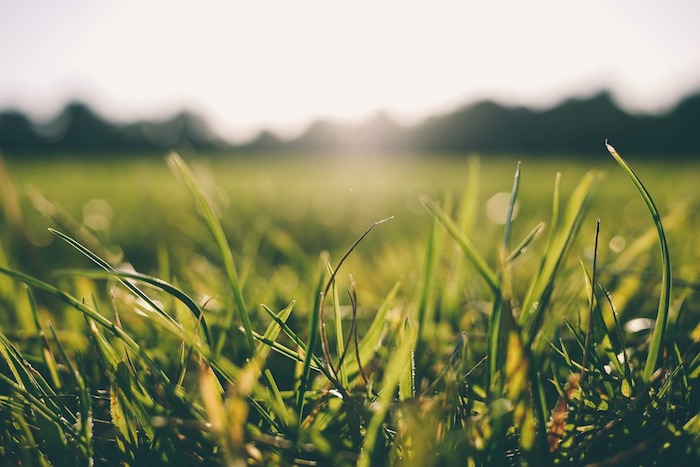
Is the grass always greener in your neighbor’s lawn? How do they do that? If you’ve been mystified how exactly your neighbor can grow such lush, green grass merely feet from your not-quite-as-green lawn, then it’s time to get that question answered – because it’s not as complicated as you think. Growing a greener lawn can be done easily and effectively, and here’s how!

What is the Secret to Keeping Grass Green?
Surely there has to be some mystical way to create green grass, right? Well, no – there’s nothing mysterious about it at all. The real secret of what makes your grass green is pretty simple: Make sure you’re providing the right nutrients, mowing right, and controlling weeds effectively. It’s really just that simple. Of course, the devil is still in the details, because conditions have to be right in order for your lawn to cast that gleaming green glow. The tips and suggestions provided here can help you set the stage for the green grass of your lawn dreams without breaking the bank.
The Edicts of a Greener Lawn
There are a few guidelines you need to abide by if you want a sumptuous, emerald lawn that you neighbors will envy. These rules, if applied effectively, will grow thicker, greener grass without a lot of extra effort.
- Green Grass Guideline No. 1: Water – Don’t water your grass daily. Instead, water it deeply but not as often. Watering deeply encourages deep root growth, so make sure you water long enough for the later to penetrate 4 to 6 inches into the soil.
- Green Grass Guideline No. 2: Deal with Weeds – If you want greener grass, attack broadleaf weeds when the weather is milder rather than when the season is in full swing because you will get rid of them more effectively when they’re actually in the process of growing.
- Green Grass Guideline No. 3: Deal with Crabgrass – Crabgrass will rob your lawn of nutrients it needs to get greener, so kill crabgrass before it spreads. The best time to do this is between the second and third mowings of the season since that’s when crabgrass is likely to start popping up.
- Green Grass Guideline No. 4: Mowing height – Don’t cut your grass too short or it will be brown and not the green you desire. Find out what kind of grass you’re growing and the best height to mow it at.
- Green Grass Guideline No. 5: Fertilize – Don’t skip fertilization in the fall. You need to feed it well before it goes dormant for the season.
- Green Grass Guideline No. 6: Test your soil – Get a kit from the local hardware store and then test your soil to find out its pH level, and then adjust with the proper nutrients.
Tips to Grow Green Grass Economically
We know you want to get the job done right but not pay a fortune to do it. These tips can make green grass grow inexpensively and easily!
- Economical Tip No. 1: Buy the right spreader – You need to use a broadcast spreader instead of a drop spreader to spread seed and fertilizer.
- Economical Tips No. 2: Kill weeds one by one – Instead of treating your entire lawn and stressing it out just for a few weeds, dig them up by hand or spray them individually to kill them.
- Economical Tip No. 3: Reseed later in the season – A reseed will work best if you do it during weather that is cooler and damper rather than in the hottest part of the season.
A Few More Green Tips
There are a few other things you need to remember as you care for your lawn that will help to keep it healthy. Remember to:
- Never mow wet grass – Giant clumps of wet lawn clipping will smother health grass beneath them, so wait until the lawn is dry before you mow.
- Set your spreader right – When using your spreader, set it for half of the recommended dosage, then treat the lawn twice – once from one direction and then again from the other. It takes more work but the distribution will be better. Also remember to fill your spreader on the driveway, not on the lawn where spillage will kill the grass. Rinse out your spreader after each use too.
- Give yourself a break – Grass won’t grow everywhere. If there are spots on your lawn where you’ve really struggled to get it going (such as a shady place) you may just need to throw in the towel and spread mulch there instead.
- Aerate – In the fall, your lawn should get a healthy aeration, especially if you have heavy clay soil. Before you fertilize, aerate your lawn from both directions. This will allow deeper penetration for the fertilizer.
Many homeowners strive for a green lawn, but not all are successful. Following these tips and suggestions will help you to have the perfect, green carpeting on your lawn you’ve always wanted. Remember, as with all things in lawn care, if there’s a will, (and a little elbow grease, good fertilizer, and healthy soil) there’s a way!